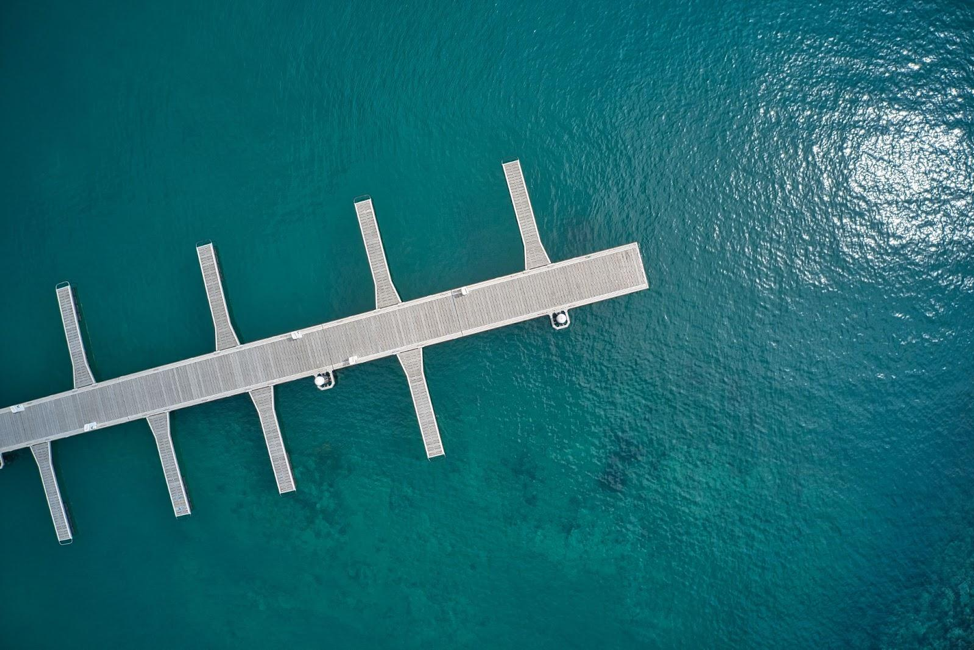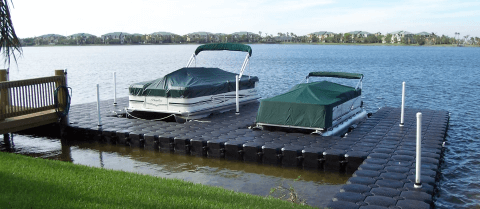How Floating Dock Company Competence Can Raise Your Beachfront Experience
Wiki Article
Produce the Perfect Docking Option With Floating Docks
Floating docks present a flexible remedy for a range of maritime demands, adjusting seamlessly to varying water degrees and varied vessel kinds. Their modular nature permits fast installment and moving, yet the option of ideal products and layout features is important for making certain both capability and visual allure. As we explore the crucial aspects that contribute to the performance of floating docks, several essential aspects regarding stability and upkeep will emerge, increasing questions about how to enhance your docking experience. The succeeding discussion will illuminate these vital factors to consider.
Advantages of Floating Docks
Floating docks offer countless advantages that make them a suitable selection for numerous maritime applications. One of the main benefits is their versatility to altering water degrees. Unlike dealt with docks, floating docks fluctuate with the trend, guaranteeing consistent access for vessels. This attribute is especially crucial in areas prone to significant tidal changes or seasonal water level modifications.In addition, floating docks are normally simpler and quicker to set up compared to typical fixed frameworks. Their modular design enables uncomplicated setting up and disassembly, facilitating maintenance and relocation when needed. This flexibility is particularly advantageous for momentary applications or in environments where conditions might transform.
Floating docks likewise often tend to be much more ecologically friendly, as they decrease interruption to the seabed and bordering aquatic ecological communities. Their resilient nature reduces the danger of damages to aquatic life, advertising a healthier environment. These docks can be tailored to fit different vessel dimensions, making certain that they fulfill details operational demands.
Inevitably, the combination of flexibility, ease of setup, and ecological considerations makes floating docks a highly efficient solution for a large range of maritime demands.
Picking the Right Materials
Choosing the ideal products for floating docks is crucial to make sure durability, toughness, and security. The choice of products straight impacts the dock's performance in various environmental problems, including exposure to water, sunlight, and potential wear from marine traffic.Typical materials utilized for floating docks consist of aluminum, timber, and high-density polyethylene (HDPE) Aluminum is light-weight, corrosion-resistant, and calls for marginal upkeep, making it a superb choice for long life. Its initial cost can be higher contrasted to other materials.
Wood, while aesthetically appealing and offering a typical appearance, can be prone to rot and bug damages otherwise effectively dealt with. Consequently, utilizing pressure-treated timber or normally resilient species like cedar or redwood can mitigate these issues.
HDPE is a prominent choice because of its resistance to UV rays and chemicals, in addition to being eco-friendly. floating dock services. It is light-weight and offered in different shades, enabling modification
Inevitably, the best product option will depend upon particular needs, including budget, wanted looks, and environmental factors to consider. Cautious evaluation of these aspects will lead to a successful and resilient floating dock remedy.
Style Factors To Consider for Security
When designing floating docks, making certain stability is a fundamental element that can significantly impact their functionality and security. Security in floating dock layout is influenced by numerous elements, consisting of buoyancy, weight circulation, and the plan of parts. An ideal buoyancy system must utilize materials that offer enough lift while reducing weight. This equilibrium ensures that the dock stays above water, also under differing lots.Weight distribution is vital; equally dispersing lots throughout the dock prevents tilting and enhances stability. This can be accomplished via calculated positioning their explanation of docking equipment, such as cleats and fenders, along with proper spacing of floats. Additionally, the measurements of the dock must be attentively prepared. Broader layouts can supply raised security, especially in harsh water problems, while longer docks may require extra supports to stop sagging.
Another vital factor to consider is the ecological impact, consisting of wave action and wind. Incorporating features such as sidewalls or skirting can aid alleviate the effects of ecological pressures, maintaining security in unfavorable problems. Ultimately, a mix of thoughtful design, product selection, and understanding of environmental variables will generate a floating dock that fulfills both security and safety demands.
Installment Tips and Methods

Next, protect the needed authorizations and stick to neighborhood laws, which might dictate installation methods and ecological factors to consider. If required, engage a certified specialist experienced in floating dock setups. Usage premium materials designed for aquatic settings to boost toughness and durability.
When positioning the dock, straighten it alongside the coastline to promote simple access. Guarantee that the anchoring system is robust, using cinder block or helical anchors to maintain the dock versus wind and wave activity. It's critical to account for seasonal water degree variations, including potential ice movement in chillier environments.
Throughout the installation, ascertain the dock's floatation and stability before settling the anchoring. On a regular basis examine the installment for any type of indications of wear or damage. By adhering to these suggestions and strategies, you can achieve a safe, functional, and visually pleasing floating dock installment that meets your demands.
Maintenance and Care Guidelines
Keeping and caring for floating docks is vital to lengthening their lifespan and making sure safe use. Routine evaluations need to be carried out to recognize any kind of signs of wear, damage, or aquatic growth. Search for fractures, loosened fittings, or blemished locations on the dock's surface area, as check my blog these issues can compromise structural honesty.Cleansing is important. Utilize a pressure washer to eliminate algae, barnacles, and particles, which can collect with time. For persistent growth, think about ecologically pleasant cleaning agents that will not harm water life.
Furthermore, inspect the mooring lines and supports regularly to ensure they are protected and totally free from deterioration. Replace any kind of torn or damaged lines quickly to preserve security.
During severe weather condition, such as storms or freezing problems, take preventive actions. Protect the dock with additional find more info mooring lines and, if possible, eliminate any detachable elements to prevent damage.
Final Thought
In final thought, the application of floating docks offers a reliable and versatile docking option suitable for different maritime applications. With proper installment and regular maintenance, floating docks can offer effective and reputable docking experiences for a vast array of vessels.As we explore the necessary elements that contribute to the efficiency of floating docks, numerous essential aspects pertaining to stability and maintenance will arise, increasing questions about exactly how to enhance your docking experience. Unlike dealt with docks, floating docks increase and autumn with the trend, guaranteeing regular accessibility for vessels.When developing floating docks, making sure security is a basic facet that can significantly impact their functionality and safety. Stability in floating dock design is influenced by different aspects, consisting of buoyancy, weight circulation, and the setup of parts. Ultimately, a combination of thoughtful layout, product option, and understanding of ecological elements will certainly produce a drifting dock that meets both stability and security demands.
Report this wiki page